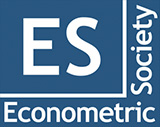2024 European Winter Meeting, Palma de Majorca, Spain: December, 2024
Quantitative Easing and Quantitative Tightening: The Money Channel
Michael Kumhof and Mauricio Salgado-Moreno
We develop a DSGE model in which commercial banks interact with the central bank through the reserves market, with each other through reserves and interbank markets, and with the real economy through retail loan and deposit markets. Because banks disburse loans through deposit creation, they never face financing risks (being unable to fund new loans), only refinancing risks (being unable to settle net deposit withdrawals in reserves). Permanent quantitative tightening, while reducing the equilibrium real interest rate, has significant negative effects on financial and real variables, by increasing the cost at which reserves-scarce parts of the banking sector create money. Temporary net deposit withdrawals, which affect the funding cost and loan extension of one part of the banking sector at the expense of another part, have highly asymmetric financial and real effects. The quantity and distribution of central bank reserves, and the extent of frictions in the interbank and reserves markets, critically affect the size of these effects, and can matter even in a regime of ample aggregate reserves. Countercyclical reserve injections can help to smooth the business cycle. We find that countercyclical reserve quantity rules can make sizeable contributions to welfare that can reach a similar size to the Taylor rule.
Preview
















































